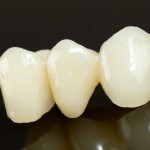
The number of dental implants placed continues to increase and the use of tooth- implant connections for fixed dental prostheses has been reported since the 1980s. while reviews of survival rates and biological and technical complications have been conducted, they have included both prospective and retrospective studies over different observation periods.
The aim of this review was to assess the survival and complication rates of tooth-implant supported fixed dental prostheses.
Methods
Searches were conducted in the Medline/PubMed, Cochrane Library, and Embase databases supplemented by manual searches in the journals; Deutsche Zahnärztliche Zeitschrift, Implantologie, Quintessenz .Randomised controlled trials (RCTs) or prospective clinical studies including a minimum of 10 patients and follow up period of at least 3 years were considered. Only studies published in English of German were included. Two reviewers independently screened and selected studies. Data was extracted and risk of bias assessed using checklists from the Scottish Intercollegiate Guidelines Network (SIGN 50), Estimated failure rates of tooth-implant supported fixed dental prostheses (T-I FDPs) and implants per 100 T-I FDPs/implant years were calculated.
Results
- 8 prospective cohort studies were included.
- Observation periods ranged from 3-10 years.
- 7 studies reported on ridged T-I FDPs, 1 on ridged and non-ridged T-I FDPs.
- A majority of the T-I FDPs were 3 units.
- 141 patients received 185 T-I FDPs, predominantly in the posterior region of the mandible.
- Eight studies provided data on the survival behaviour with 7 studies contributing to the quantitative analysis.
| No of studies | incidence rate (95%CI) | |
| T-I FDP failure | 7 | 0.02 (0.01–0.03) |
| Implant failure | 7 | 0.01 (0.01–0.02) |
- Assuming constant hazard over the five- and 10-year periods survival rates the pooled survival rates are shown in the table.
| Survival rate (95%CI) | |
| T-I FDP survival – 5 yrs | 90.8% (86.4–93.8%) |
| T-I FDP survival – 10 yrs | 82.5% (74.7–88.0%) |
| Implant survival – 5 yrs | 94.8% (90.9–97.0%) |
| Implant survival –10 yrs | 89.8% (82.7–99.4%) |
- Out of 185 T-I FDPs
- 21 (11.4%) minor and 23 (12.4%) major biological complications were observed.
- 23 (12.4%) minor and three (1.6%) major technical complications occurred.
Conclusions
The authors concluded: –
Due to the lack of well-designed studies exceeding a 10-year follow-up, prognosis for the long -term can hardly be given. Considering the inclusion criteria of this systematic review, T-I FDP-supported fixed dental prostheses show acceptable survival rates after five and 10 years. Rigidly constructed T-I FDPs should be preferred. With regard to the available data, these conclusions are valid only for three- to four-unit T-I FDPs.
Comments
The authors indicate that a protocol was developed prior to starting the review although they do not indicate if it has been published. The availability of published protocol enables the reader to assess if there have been deviations from the protocol and whether they have been justified. A good search has been conducted although restricting included studies to those published in English or German may exclude some relevant papers. As the authors’ highlight while heterogeneity tests on the data returned low values there was variation in the framework designs of the materials used for the T-I FDPs. In addition, there was variation in the examination protocols and outcomes in particular the terms survival and success were consistently reported. The use of common definitions and outcome sets and improvement in reporting would be helpful for future reviewers.
Links
Primary Paper
von Stein-Lausnitz M, Nickenig HJ, Wolfart S, Neumann K, von Stein-Lausnitz A,Spies BC, Beuer F. Survival rates and complication behaviour of tooth implant-supported, fixed dental prostheses: A systematic review and meta-analysis. J Dent. 2019 Sep; 88:103167. doi: 10.1016/j.jdent.2019.07.005. Epub 2019 Jul 12. Review. PubMed PMID: 31306691.
Other references
Dental Elf – 3rd Jan 2018
Metal-free fixed dental prosthesis – insufficient evidence to support or refute effectiveness
Dental Elf – 18th May 2017
Inlay-retained fixed dental prosthesis have acceptable 3-yr survival rate suggests review
Dental Elf – 15th Jul 2016
Fixed dental prostheses: rigid and non-rigid connections to implants
